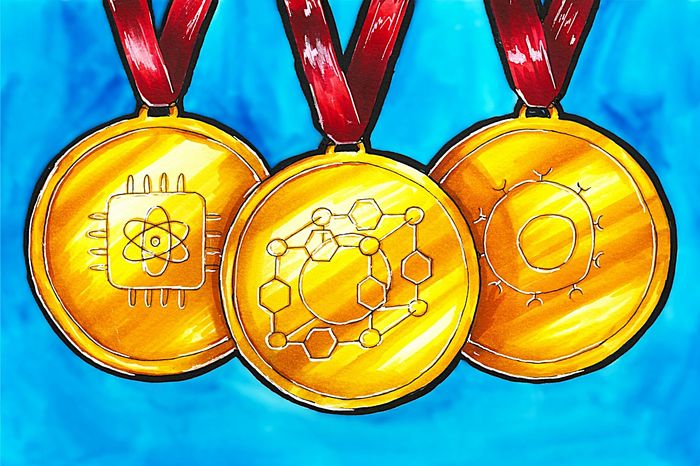Cool it down: electrocalorics and changing the way we do scientific research
Dhruv Shenai talks to materials science professor Neil Mathur about how electrocalorics show that science needn’t always be application driven

When I sat down to speak to a professor of materials physics, the last thing I expected was to hear about Darwinian evolution but that’s exactly where my conversation began with Professor Neil Mathur from the Materials department.
“The thing is Dhruv,” he began, “science is a bit like evolution. There’s this misconception from governments that you can just fund science projects that have a clear end goal and that’s enough. That’s like saying the giraffes’ ancestors stretched their necks to reach higher leaves and that’s why they have long necks. The reality is that longer necks were developed by random mutation and evolutionarily selected. So you have to leave researchers to study the things they’re interested in, and after, you can pick out the best things from their results. It’s messy but that’s Darwinian evolution. It’s how science has always worked.”
It’s a profound philosophy, questioning the bigger picture of science innovation, and it left me initially speechless. Where did this come from? Well, upon discussion, I soon found that his research on electrocaloric materials may provide the answers.
“It’s messy but that’s Darwinian evolution. It’s how science has always worked.”
These materials rely on the electrocaloric effect where an electric field causes a change in temperature, and it could potentially upheave the current refrigerator and heat pump technology, offering a greener and quicker pathway for temperature control. Yet when Neil made his discoveries, he wasn’t chasing these applications. Instead, he was focused on making the materials as effective as possible, proof that sometimes good science doesn’t need the pressure of applications.
The electrocaloric effect is described as a highly reversible temperature change due to changes in a material’s long-range electrical polarisation. Put simply, it’s a way for the material to naturally heat up or cool down with electricity.
“I would say that this field was quite niche. There was a little work on electrocalorics in the 60s and beyond, but they couldn’t get it to work very well, and it died down. It was only when we published our result in 2006 that there started to be more interest.”
Mathur is being modest. His 2006 paper didn’t just attract attention, it reignited the entire field. The report details how you can use a thin film of ceramic to apply a larger electric field and hence achieve a tenfold increase in the electrocaloric effect. Since then, electrocaloric research has expanded rapidly, with about 10 times as many papers published each year.
“His 2006 paper didn’t just attract attention, it reignited the entire field”
Then in 2009, they showed that if you can stack many of these films into a sandwich-like structure you can pump more heat, increasing the technology's use in the real world. Since 2006, other researchers have tried to emulate their research with other materials, and the field has finally taken off. But it begs the question: since the field was considered unproductive for many years and therefore less active, would this discovery have been possible were it not for curiosity?
For Mathur and his colleagues, it has given them the chance to be at the forefront of research, and it’s no surprise that the annual electrocaloric conference is now held in Cambridge. But Neil is quick to deflect the spotlight, instead highlighting it as an opportunity for collaboration and discussion.
“When I went to the US for a similar conference, I was described as a ‘distinguished invited speaker’, and I was offered a ribbon with these words to go below my name badge. But I just don’t see that as necessary. It’s like saying I’m better than the rest of you — that’s just going to antagonise my peers. The reality is that the work we did in 2006 could have been done by anyone, we just happened to think of it first. Yes, the reaction following was always going to be ‘ah we should have done that! ’, but everyone has moved on since and produced some amazing science.”
It’s a stark reminder that the pursuit of good science often comes when you let researchers follow their own passion and collaborate. It begs the question of whether we need changes to the funding system to reflect this. Money is a constant consideration for departments; getting grants is a never-ending cycle that puts many researchers into a frenzy. This only distracts them from potentially useful work. Perhaps a system that provides financial stability but still rewards innovation could allow research to become more productive.
For now, just as evolution favours what works rather than what’s planned, Neil’s resolve to stick to the materials and not worry about applications may lead to many more fruitful discoveries in the field. “I’m actually just happy to make a difference to the materials. It’s fun to see what we can do.”
 News / Uni Scout and Guide Club affirms trans inclusion 12 December 2025
News / Uni Scout and Guide Club affirms trans inclusion 12 December 2025 News / Cambridge Vet School gets lifeline year to stay accredited28 November 2025
News / Cambridge Vet School gets lifeline year to stay accredited28 November 2025 News / Cambridge study finds students learn better with notes than AI13 December 2025
News / Cambridge study finds students learn better with notes than AI13 December 2025 Science / Did your ex trip on King’s Parade? The science behind the ‘ick’12 December 2025
Science / Did your ex trip on King’s Parade? The science behind the ‘ick’12 December 2025 News / Pembroke to convert listed office building into accom9 December 2025
News / Pembroke to convert listed office building into accom9 December 2025








